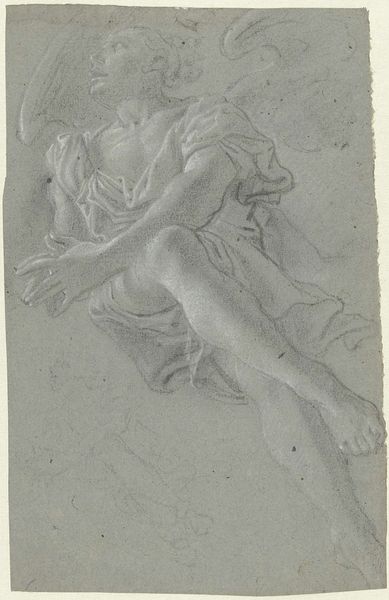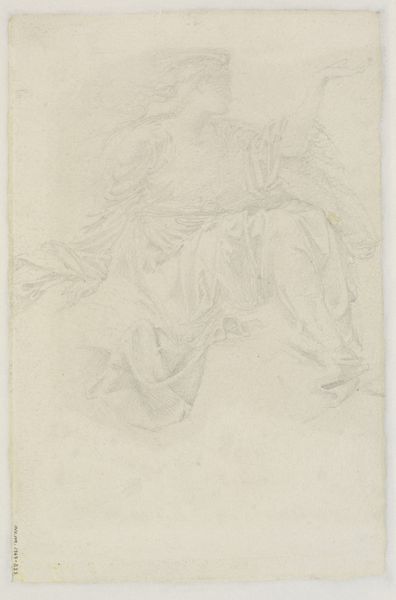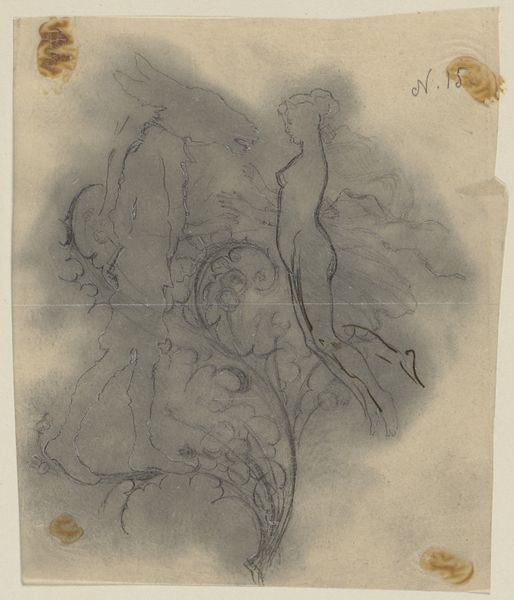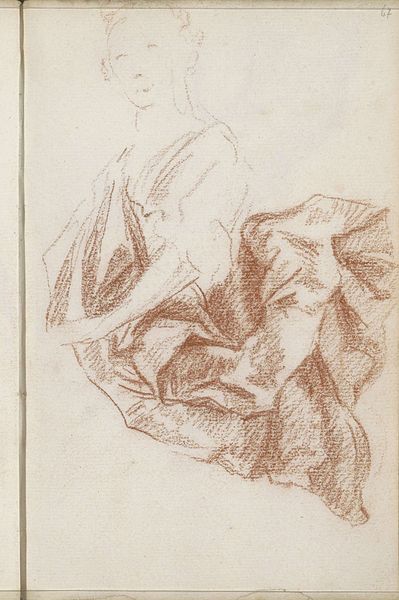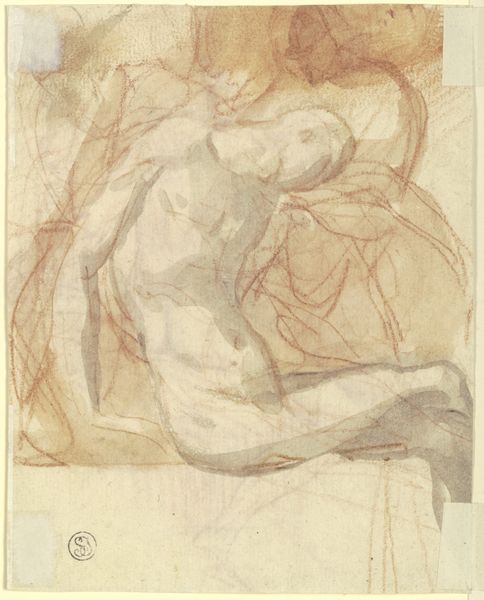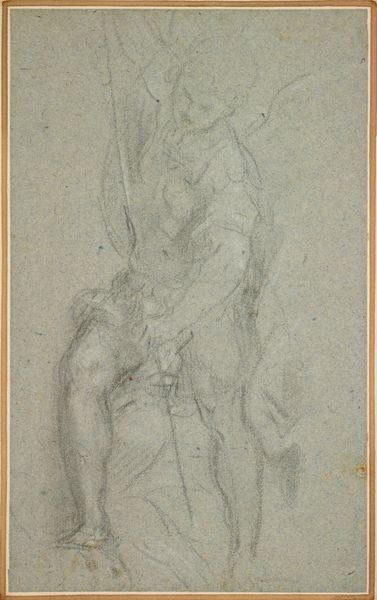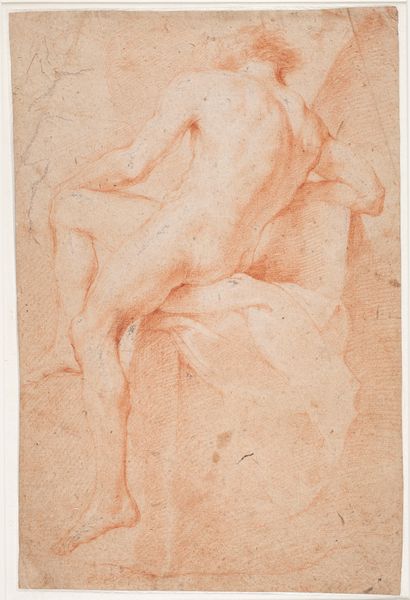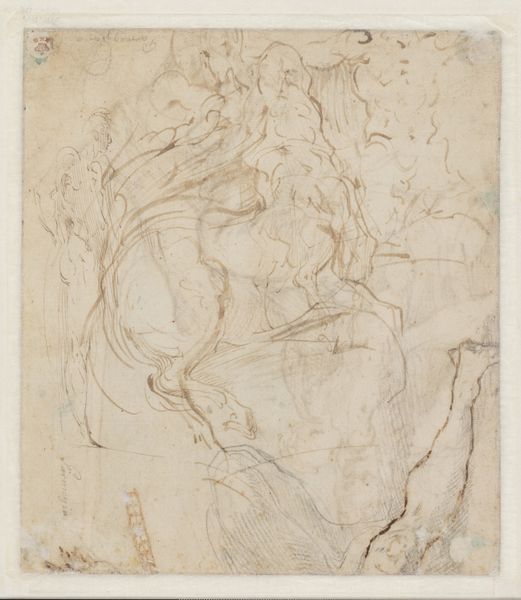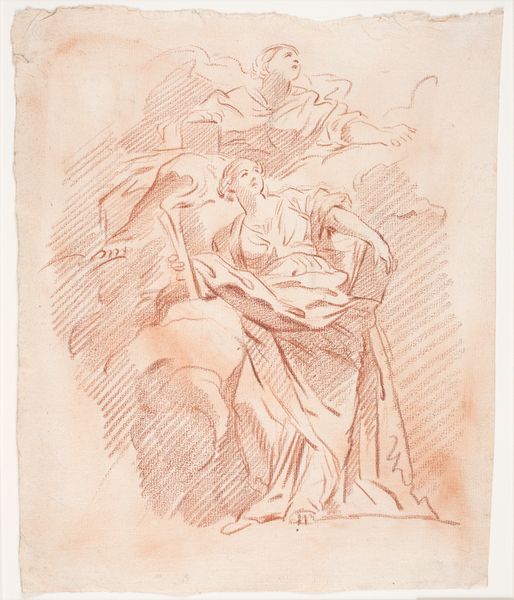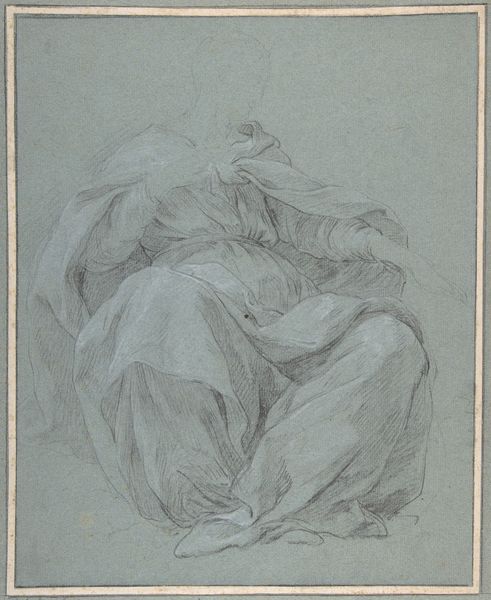
Study for a Figure of Balaam (recto) and Study for a Right Arm (verso) 1682 - 1683
0:00
0:00
drawing, pencil
#
portrait
#
drawing
#
baroque
#
figuration
#
pencil
#
academic-art
Dimensions: 16 3/4 x 10 3/4 in. (42.55 x 27.31 cm) (image)19 7/8 x 14 1/4 in. (50.48 x 36.2 cm) (set into border)
Copyright: Public Domain
This is Carlo Maratti’s red chalk drawing, Study for a Figure of Balaam, made sometime in the 17th or early 18th century. Maratti was a leading painter in Rome, celebrated for his classicizing style during the Baroque period. Here, Balaam, a diviner from the Hebrew Bible, is depicted in dynamic motion. The drawing showcases Maratti’s skill in capturing the human form, particularly his attention to musculature and drapery. Consider that during this time, the Catholic Church was a major patron of the arts. Artists like Maratti were commissioned to create works that reinforced religious narratives and moral values. Balaam's story, in which he is hired to curse the Israelites but is compelled by God to bless them instead, reflects themes of divine intervention. Notice that the figure's pose and expression convey a sense of drama, inviting viewers to engage with the spiritual intensity of the biblical narrative. The red chalk medium lends a warmth and immediacy to the sketch, as if we’re witnessing the artist's creative process. This study embodies the intersection of religious conviction, artistic skill, and cultural context that defined art in Baroque Rome.
Comments
minneapolisinstituteofart almost 2 years ago
⋮
Carlo Maratti, arguably the preeminent painter in Rome in the late 17th century, executed this sheet of studies while designing mosaics for the Chapel of the Presentation of the Holy Virgin in St. Peter's. This boldly drawn male figure seated on clouds is the Old Testament prophet Balaam, who adorns one of the chapel's pendentives, that is, a triangular area beneath the dome. Maratti executed countless drawings for this important papal commission; at least eight extant studies can be associated with Balaam. In this one, Maratti focused on the figure's active pose, which would change very little in subsequent studies and in the final mosaic, and on the back of the sheet, he worked out Balaam's pointing hand gesture. In other drawings he continued to adjust various details, like the figure's head and the general placement of the drapery. Once every detail was perfected, Maratti, or a senior member of his large workshop, would have produced a full-scale drawing called a "cartoon" for the mosaicist. The French painter Joseph-Marie Vien (1716-1809) once owned this drawing and wrote his name on it: "Jo. Vien." For years this misled scholars into thinking that Vien had executed the study. IMAGE caption: Balaam, mosaic after a cartoon by Carlo Maratti, 1684, Cappella della Presentazione, St. Peter's, Rome
Join the conversation
Join millions of artists and users on Artera today and experience the ultimate creative platform.
